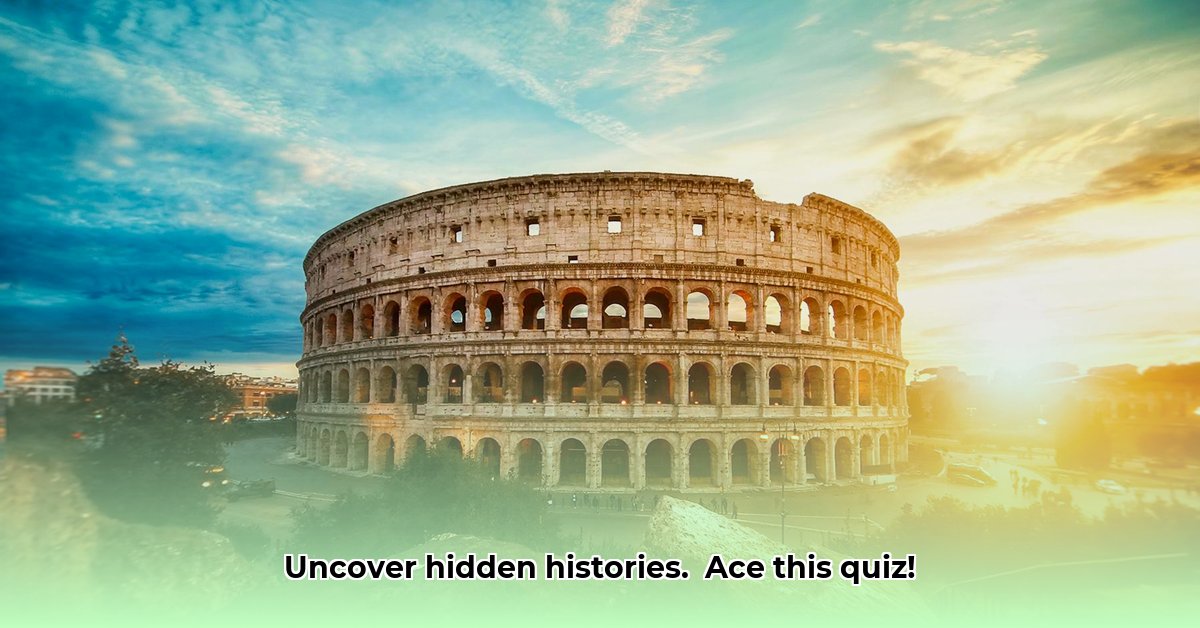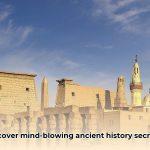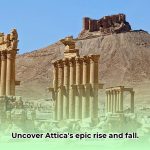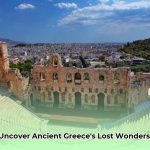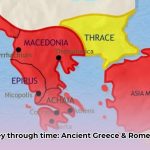Ever dreamed of traveling back in time? Curious about those amazing ancient civilizations – the Romans, the Egyptians, the Greeks? This quiz isn’t just about testing your knowledge; it’s a fun adventure into the past. We’ll tackle some fascinating questions about ancient empires, revealing surprising facts and busting common myths along the way. Get ready to explore the mysteries of history, discover some amazing stories, and maybe even change your mind about a few things. Let’s dive in! For more ancient history fun, check out this Ancient History Trivia.
Test Your Knowledge of Ancient Civilizations and Expand Your Historical Perspective
Ever wondered about the secrets whispered by ancient stones? Or the ingenious minds behind marvels lost to time? Then get ready to test your knowledge and delve into the fascinating world of ancient history! This quiz isn’t just about memorizing dates; it’s about exploring the big ideas and enduring mysteries that continue to captivate us today. We’ll unravel some of the biggest puzzles and explore some ongoing debates that historians still grapple with. So grab your thinking cap and let’s begin! Do you think you’re an expert in ancient history?
Question 1: The Pyramids of Giza – More Than Just Tombs? Unveiling Egyptian Civilization
What were the ancient Egyptian pyramids really for, and what incredible challenges did their builders face?
Answer: We often picture the pyramids of Giza as simply grand tombs for pharaohs, the ultimate resting places of powerful rulers. While that’s partly true, the pyramids were much more than that. Think of them as massive, stone advertisements! They were colossal statements of royal power, demonstrating the pharaoh’s wealth, influence, and their supposed divine connection. Imagine the sheer scale of these projects – millions of tons of stone, painstakingly moved, carved, and positioned with incredibly limited technology. We’re talking about a level of organization and engineering skill that’s still astounding today.
Building these behemoths presented enormous challenges. How did they move such massive stones? How did they manage the workforce? What sort of planning and mathematical understanding did they possess? Current research is slowly revealing more incredible details—from the clever use of ramps and levers to the amazing precision in their design. But there are still plenty of mysteries and disagreements among experts about the precise methods used. Some believe that sophisticated tools and techniques were employed, while others suggest more primitive methods, indicating a wider range of skills and labor involved. It’s a continuing story of discovery, reflecting the ongoing effort to understand ancient Egyptian society and its capabilities. Beyond their function as tombs and symbols of power, some theories propose that the pyramids had astronomical significance, aligning with specific stars or constellations. Others suggest they played a role in ancient Egyptian religious rituals, serving as points of connection between the earthly and divine realms. The orientation of the Great Pyramid, for example, is closely aligned with the cardinal points, suggesting a deep understanding of astronomy and a desire to harmonize with the cosmos.
Question 2: Exploring Roman Engineering Marvels: The Aqueducts – A Stroke of Genius?
Roman engineering is legendary. Pick one of their amazing creations and explain what made it so clever.
Answer: The Roman aqueducts are a fantastic example—a testament to Roman engineering brilliance. These weren’t just simple water channels; they were sophisticated systems of bridges, tunnels, and pipes that brought fresh water to cities across the vast Roman Empire. Some of these things stretched for tens of miles, bringing clean water to bustling cities and towns. What elements contributed to their engineering triumphs?
The ingenuity of these aqueducts lies not just in their sheer size but also in their understanding of gravity, hydraulics, and materials. The Romans cleverly used gravity to move water over long distances with minimal pumping. They understood how to build sturdy arches and channels that could withstand the pressure and the passage of time. They understood how to create durable structures using materials like concrete. Imagine planning and constructing such a system without modern tools or surveying equipment! It’s a remarkable feat of engineering that speaks volumes about Roman organizational skills, resourcefulness, and advanced understanding of physics. It’s a common topic in ancient history trivia for a reason! These aqueducts also dramatically improved public health and sanitation in Roman cities by providing a reliable source of clean water for drinking, bathing, and sewage disposal. This infrastructure supported the growth of large urban centers and contributed to the overall prosperity of the Roman Empire. Furthermore, the maintenance and operation of the aqueducts required a dedicated workforce, creating jobs and fostering economic activity.
Question 3: Ancient Greek Philosophy: A Legacy That Endures – From Socrates to Aristotle
How did Greek thinkers shape our world, and which schools of thought left the biggest mark?
Answer: Ancient Greek philosophy is often considered the foundation of Western thought. Thinkers like Socrates, Plato, and Aristotle didn’t just ponder the universe; they fundamentally changed how we think about ethics, politics, logic, and the nature of reality itself. Approximately how many philosophical concepts did they introduce to civilization?
Socrates, known for his relentless questioning, emphasized critical thinking and self-examination. Plato, his student, developed the Theory of Forms, suggesting a world of perfect ideals beyond our senses. Aristotle, a student of Plato, focused on observation and logic, establishing the groundwork for scientific inquiry. These weren’t just abstract ideas; they laid the intellectual groundwork for Western civilization. Their ideas continue to influence how we approach ethics, political systems, and even scientific research. This enduring influence makes Greek philosophy a cornerstone of any deep dive into ancient civilizations. Beyond these iconic figures, schools of thought like Stoicism and Epicureanism offered practical guidance on how to live a virtuous and fulfilling life. Stoicism, founded by Zeno of Citium, emphasized self-control, reason, and acceptance of fate, while Epicureanism, founded by Epicurus, focused on seeking pleasure and avoiding pain. These philosophical movements had a profound impact on Roman society and continue to resonate with people today.
Question 4: The Mayan Collapse: A Mystery Unfolding – Uncovering the Secrets of Mesoamerica
What are some of the theories about why the Classic Maya civilization faded away?
Answer: The decline of the Classic Maya civilization (around 900 CE) remains a captivating historical mystery. Unlike some civilizations that were conquered or destroyed, the Maya seemingly vanished over a period of time. What happened? There’s no single easy answer. Several theories exist, and likely it was a complex mix of factors. What percentage of their population disappeared?
Some experts point to environmental problems such as prolonged drought and soil erosion, perhaps leading to widespread crop failures and famine. Others suggest internal conflicts, overpopulation, or even societal upheaval. Some theories focus on the collapse of trade networks or a shortage of essential resources, including water. The lack of a definitive answer makes the Maya’s collapse a subject of active research and intense debate. Ongoing studies use a combination of archeological evidence, climate models, and historical records to attempt to better understand this pivotal event. It shows us that history isn’t always a neatly-packaged story. While the exact figures are debated, some estimates suggest that the Mayan population declined by as much as 70-90% during this period, with entire cities being abandoned. Recent research suggests that a series of prolonged droughts, exacerbated by deforestation and unsustainable agricultural practices, played a significant role in the Maya collapse.
Question 5: Mesopotamia: The Dawn of Civilization – Innovations and Achievements in the Fertile Crescent
What were some of the groundbreaking contributions of the Mesopotamians that changed the course of history?
Answer: Mesopotamia, often called the “cradle of civilization,” was a land of innovation. It’s where many of the foundations of modern society were laid. Among their incredible achievements: the development of writing! Cuneiform, one of the earliest known writing systems, revolutionized the way information was stored and transmitted. This wasn’t just about recording facts; it led to the development of complex legal codes, like the famous Code of Hammurabi, which governed daily life. About how many laws were outlined in the Code of Hammurabi?
They also made huge advances in mathematics and architecture, building impressive structures and developing sophisticated systems of irrigation. Their inventions and accomplishments were incredibly influential, laying the groundwork for future civilizations. Consider their inventions as a foundation upon which later cultures built, and they are frequently found in ancient history quizzes for their importance. The Code of Hammurabi, for example, contained approximately 282 laws covering a wide range of topics, including trade, property rights, family law, and criminal justice. Mesopotamians also made significant advancements in astronomy, developing a sophisticated calendar system and charting the movements of the stars and planets. Their knowledge of astronomy and mathematics was essential for agriculture, navigation, and religious practices.
The Ever-Evolving Story of the Past: A Final Thought on Ancient History
Studying ancient history is like working on a giant, ongoing jigsaw puzzle. We have fragments of evidence, differing interpretations, and sometimes, gaps in our knowledge that we may never completely fill. But that’s part of the intrigue! Each new discovery or interpretation adds more pieces to the puzzle, revealing more about the lives, beliefs, and societies of these incredible civilizations. So keep exploring, keep questioning, and keep uncovering the hidden histories of our past. Are you ready for another historical deep dive?
How to Overcome Biases in Interpreting Ancient Historical Sources – Decoding the Past
Let’s dive into the fascinating, yet tricky, world of ancient history! Ready to test your skills and uncover some hidden truths? This quiz will challenge your assumptions and show you how to overcome biases in interpreting ancient historical sources. Are you up to the challenge of unbiased historical analysis?
Question 1: The Great Pyramid of Giza – Identifying Perspective in Ancient Egypt
Imagine you’re an archaeologist examining the Great Pyramid. What potential biases might influence your interpretation of its construction and purpose?
Answer: We might assume, based on modern engineering knowledge, the pyramid was built solely for a pharaoh’s tomb. But that’s a modern perspective! Ancient Egyptian beliefs and practices were vastly different. There might be other explanations—perhaps astronomical alignments, religious symbolism, or even a combination of factors. We must account for our own cultural lens and consider alternative interpretations supported by the evidence. Think about what information is missing—what clues might be overlooked? That, my friends, is dealing with bias head-on. What other purposes have been theorized for the pyramids? Other theories suggest the pyramids served as power plants, designed to harness and transmit energy, or that they acted as massive water pumps, regulating the flow of the Nile. To explore these alternative hypotheses, we need to examine the archaeological evidence, consider the ancient Egyptian worldview, and consult with experts from various fields.
Question 2: The Roman Empire’s Expansion – A Critical Look at Imperial Accounts
Roman writings often portray their conquests as glorious achievements, showcasing military prowess and cultural superiority. How might this perspective distort our understanding of Roman expansion?
Answer: Roman accounts are naturally biased. They celebrate victories while often downplaying the brutal realities of conquest—the destruction of cities, enslavement, and resistance. To counter this, we need to seek out alternative perspectives, perhaps from the conquered peoples, from archaeological digs revealing the destruction of those times, or from the study of Roman administrative records. Multiple viewpoints can paint a much richer, more nuanced picture even if some sources are intentionally biased towards showing the Roman Empire in a favorable light. How can we ensure a balanced view of Roman history? To ensure a balanced view of Roman history, we can consult sources such as the writings of Tacitus, who criticized the excesses of Roman emperors, and archaeological evidence, which can reveal the impact of Roman rule on local populations.
Question 3: Greek Democracy – Challenging the Idealized View
Ancient Greek texts frequently celebrate democracy as a pinnacle of human achievement. What are some potential biases embedded in these accounts?
Answer: The glory of Athenian democracy is often overstated. It excluded women, slaves, and foreigners. The ideal of citizen participation didn’t reflect the lived experience of the majority. To gain a more complete view, we should examine evidence from diverse sources — including legal records, dramatic literature, and archaeological evidence, that may reveal the lives of those excluded from formal political participation. It’s about understanding who was writing, who was left out, and the underlying message they want to convey. Approximately what portion of the Athenian population was excluded from democracy? Approximately 80-90% of the Athenian population was excluded from democratic participation, including women, slaves, and foreigners. To understand their perspectives, we can examine sources such as the writings of female poets like Sappho, slave narratives, and legal documents that reveal the limitations of Athenian citizenship.
Question 4: Interpreting Archaeological Discoveries – Avoiding Assumptions in Historical Analysis
Archaeologists uncover artifacts. Let’s assume you find a collection of weapons alongside religious objects in a burial site. What are the potential interpretations, and how might bias influence our conclusions?
Answer: We might assume a warrior-priest, but this is just one interpretation. Perhaps the weapons symbolize protection or power in the afterlife. Religious and warfare aspects of life in the past may have been more intertwined than we assume today. Archaeological evidence is not self-interpreting. We must factor in the context of discovery, cultural beliefs, and even the archaeologist’s own theoretical biases. It’s about critical thinking here. What alternative meanings could these artifacts hold? These artifacts could hold symbolic meanings related to status, kinship, or even specific rituals. To interpret them accurately, we need to consider the broader archaeological context, consult with experts from various disciplines, and be open to alternative explanations.
Key Takeaways:
- Multiple Sources: Don’t rely on single accounts. Cross-reference information from various sources, including those from different cultures and perspectives.
- Context is Key: The cultural, social, and political environments shape how historical events are recorded. Understand this context!
- Author’s Perspective: Consider the author’s biases, their intentions, and who they were writing for.
- Interdisciplinary Approach: Integrate linguistic, anthropological, and archaeological data for a richer understanding.
- Recognize Missing Information: Acknowledge gaps and limitations in historical records. What isn’t documented is as important as what is reported.
- Challenge Assumptions: Be aware of your own biases and challenge assumptions that may influence your view of the past.
Ancient History Quiz: Mastering Chronological Events and Cultural Shifts – A Global Perspective
Key Takeaways:
- Agriculture led to settled societies, sparking population growth, specialized labor, and complex social structures in various ancient civilizations.
- Writing systems independently emerged, enabling record-keeping and knowledge transmission.
- Monumental architecture showcases advanced engineering and centralized power.
- Debates persist regarding the reasons for the decline of major civilizations and the extent of cultural exchange between them.
- Chronological accuracy is challenging due to limitations in dating methods and varying reliability of historical accounts.
- The scarcity of surviving records makes complete historical reconstruction difficult.
Question 1: The Dawn of Civilization – Identifying Common Civilizational Traits
What common thread links the development of early civilizations in Mesopotamia, Egypt, and the Indus Valley?
Answer: All three regions saw the rise of settled agricultural societies. This shift from nomadic lifestyles fostered population growth and spurred the development of specialized labor and complex social hierarchies. Imagine the impact of reliably producing food – it allowed for population density, leading to villages, then cities, and finally, the emergence of states. It’s a foundational shift for human history. How did agriculture influence social hierarchies? Agriculture influenced social hierarchies by creating a system of surplus production. This surplus allowed for the development of specialized labor, such as priests, warriors, and administrators, who did not need to engage in food production. These specialized groups gained power and influence, leading to the creation of social hierarchies.
Question 2: Writing’s Impact – Analyzing the Evolution of Communication
How did the invention of writing systems revolutionize ancient societies?
Answer: Writing systems, invented independently in different regions (cuneiform in Mesopotamia, hieroglyphs in Egypt, etc.), transformed how societies functioned. They facilitated record-keeping, administration, and the preservation of knowledge, creating a lasting legacy that influences us today. Before writing, knowledge was passed down orally, shaping culture in a different way. The written word brought a new level of order and the ability to document history. What are some of the oldest known writing systems? Some of the oldest known writing systems include cuneiform, developed in Mesopotamia around 3200 BCE, and hieroglyphs, developed in Egypt around 3200 BCE.
Question 3: Engineering Marvels – Exploring Ancient Architectural Achievements
What do the Egyptian pyramids, Mesopotamian ziggurats, and other monumental structures reveal about the capabilities and organization of ancient societies?
Answer: These massive structures weren’t just impressive feats of engineering; they also reflect the power of centralized authority, the ability to organize vast labor forces, and sophisticated knowledge of math and engineering principles. They serve as powerful symbols of the cultures that built them, demonstrating advanced planning and resource management. Think of the sheer scale – it’s a testament to human ingenuity and collaborative power. What mathematical principles were essential for their construction? Essential mathematical principles included geometry, used to calculate angles and dimensions, and arithmetic, used to measure and allocate resources.
Question 4: The Mysteries of Decline – Why Do Civilizations Collapse?
What are some of the ongoing debates surrounding the collapse of ancient civilizations, such as the Late Bronze Age collapse (c. 1200 BCE)?
Answer: The reasons behind the decline of mighty empires are complex and often debated. Scholars point to factors such as climate change, environmental degradation, internal conflicts, external invasions, and perhaps a combination of these influences. It’s rarely a single cause—it’s usually a confluence of factors that destabilizes even the most powerful societies, reminding us that civilizations are not static and immutable. How does climate change affect civilizations? Climate change can affect civilizations by disrupting agricultural production, leading to famine and social unrest. It can also lead to migration and conflict over scarce resources.
Question 5: Interpreting the Past – Overcoming Historical Challenges
Why is establishing accurate chronologies in ancient history so difficult? What challenges do historians face?
Answer: Dating ancient events is challenging due to limitations in dating methods and the uneven quality of historical sources. The scarcity of surviving records from some cultures further complicates the puzzle. Furthermore, interpreting texts and archaeological finds requires specialized skill, leading to ongoing discussions among experts on the meaning of historical records. Think of it as piecing together a jigsaw puzzle with many missing pieces and unclear pictures. What dating methods are commonly used in archaeology? Common dating methods include radiocarbon dating, which measures the decay of carbon-14 in organic materials, and dendrochronology, which analyzes tree rings to establish a timeline.
Question 6: Cultural Exchange – Tracing the Spread of Ideas and Practices
How do historians determine the extent of cultural interaction and exchange between different ancient civilizations? What are some of the challenges?
Answer: Tracing cultural interactions in ancient times is a complex task. Historians rely on examining material artifacts (trade goods), linguistic evidence (loanwords), and the movement of peoples recorded in texts (though these texts are not always unbiased). It’s a matter of connecting the dots between various cultural groups, an ongoing process that often requires creativity and careful analysis of incomplete data. How does linguistic analysis reveal cultural exchange? Linguistic analysis can reveal cultural exchange by identifying loanwords, which are words adopted from one language into another. The presence of loanwords can indicate contact and interaction between different cultures.
Ancient Civilizations: Architectural Marvels and Engineering Innovations Across Geographic Regions – A Global Perspective
Key Takeaways:
- Ancient civilizations showed incredible ingenuity in engineering, despite limited technology.
- They cleverly used local resources and simple machines.
- Their creations reflect a deep understanding of geography and climate.
- Many building techniques remain partially mysterious.
- Cultural and religious beliefs strongly influenced designs.
- Modern engineers still learn from these ancient marvels.
Question 1: How did the ancient Egyptians move massive stones to build the pyramids? – The Mystery of Construction
This is a classic mystery! We know they used ramps and levers. But, the exact methods—especially for the largest stones—remain debated. Some theories propose elaborate systems of rollers, sledges, and even water-based methods. It’s a testament to their organizational skills and engineering prowess. The sheer scale of these projects is breathtaking. How did they do it? It’s a question that continues to fascinate scholars. What role did manpower play in their construction? Manpower played a central role in their construction. Historians estimate that tens of thousands of workers were involved in the construction of the pyramids, using their collective strength to move and position the massive stones.
Question 2: What innovations did the Romans develop in construction? – Roman Engineering Legacy
Roman engineering was truly remarkable. Their use of concrete—a revolutionary material—allowed them to build massive structures, such as aqueducts and amphitheaters. Think of the Colosseum! Their road systems were also advanced, enabling efficient trade and communication across their vast empire. The Romans were masters of infrastructure. They understood the importance of well-planned cities. Their innovations still influence building practices today. How did concrete revolutionize Roman architecture? Concrete revolutionized Roman architecture by allowing for the construction of complex and durable structures that were previously impossible to build with traditional materials. Its versatility and strength enabled the Romans to create vast arches, domes, and vaults, which are hallmarks of their architectural style.
Question 3: How did ancient civilizations adapt their building techniques to different environments? – Adaptation and Resourcefulness
Think about the difference between the sun-baked mud bricks of Mesopotamia and the stone structures of Egypt. Each civilization adapted to its environment. The availability of materials dictated building style. Inca stonework, perfectly fitted without mortar, is another example of ingenious adaptation to a mountainous landscape. Climate also played a role; consider the use of passive cooling techniques in various ancient buildings. This shows their understanding of their environment. What are some examples of sustainable ancient building practices? Examples of sustainable ancient building practices include the use of locally sourced materials, passive cooling techniques, and the construction of structures that were designed to last for centuries.
Question 4: What role did astronomy play in the design of some ancient structures? – Cosmic Alignments
Many ancient structures—like Mayan pyramids—align with astronomical events. This suggests a profound understanding of astronomy and its integration into their culture and building processes. The precision of these alignments is astonishing. Why would they do this? Religious beliefs and a deep connection to the cosmos are likely explanations. Which constellations were important to ancient civilizations? Important constellations to ancient civilizations included the Pleiades, Orion, and the Big Dipper.
Question 5: What can modern engineers learn from ancient building techniques? – Lessons from the Past
Ancient construction often prioritized sustainability, using local materials and minimizing environmental impact. Their solutions were innovative within their constraints. Modern engineers can learn valuable lessons in resource management and sustainable design. We can find inspiration in their ingenuity. Re-examining ancient methods could offer useful solutions for today’s issues. Isn’t that fascinating? How can ancient techniques address modern sustainability challenges? Ancient techniques can address modern sustainability challenges by providing insights into resource management, energy efficiency, and the design of durable and resilient structures.
- Uncover Ancient Arcadia: Myths, Power, and Geography - August 12, 2025
- Explore Ancient Olympia’s Map: Unveiling 2,500 Years of History - August 12, 2025
- Discover Ancient Greece’s Islands: A Timeless Journey Through History and Myth - August 12, 2025
